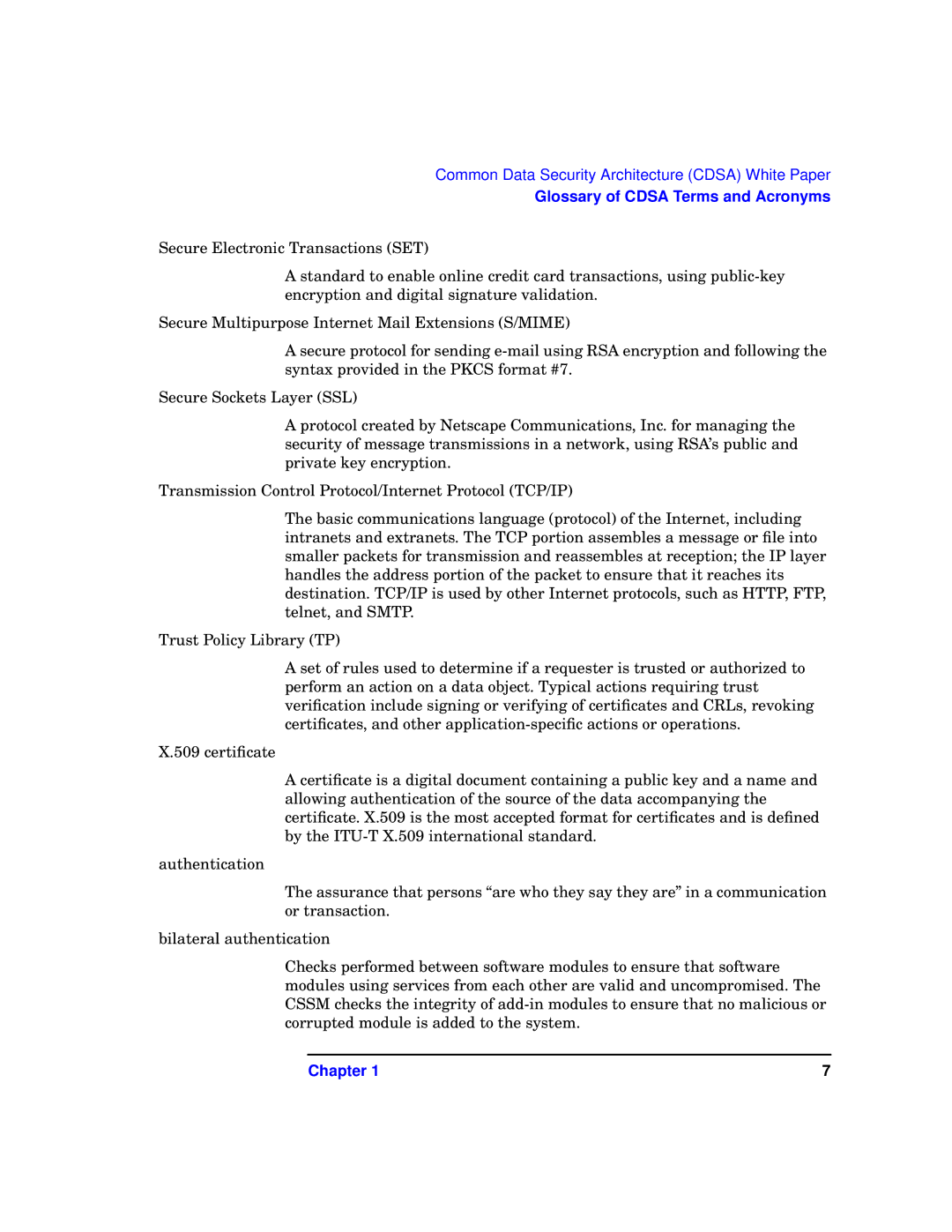Common Data Security Architecture (CDSA) White Paper
Glossary of CDSA Terms and Acronyms
Secure Electronic Transactions (SET)
A standard to enable online credit card transactions, using
Secure Multipurpose Internet Mail Extensions (S/MIME)
A secure protocol for sending
Secure Sockets Layer (SSL)
A protocol created by Netscape Communications, Inc. for managing the security of message transmissions in a network, using RSA’s public and private key encryption.
Transmission Control Protocol/Internet Protocol (TCP/IP)
The basic communications language (protocol) of the Internet, including intranets and extranets. The TCP portion assembles a message or file into smaller packets for transmission and reassembles at reception; the IP layer handles the address portion of the packet to ensure that it reaches its destination. TCP/IP is used by other Internet protocols, such as HTTP, FTP, telnet, and SMTP.
Trust Policy Library (TP)
A set of rules used to determine if a requester is trusted or authorized to perform an action on a data object. Typical actions requiring trust verification include signing or verifying of certificates and CRLs, revoking certificates, and other
X.509 certificate
A certificate is a digital document containing a public key and a name and allowing authentication of the source of the data accompanying the certificate. X.509 is the most accepted format for certificates and is defined by the
authentication
The assurance that persons “are who they say they are” in a communication or transaction.
bilateral authentication
Checks performed between software modules to ensure that software modules using services from each other are valid and uncompromised. The CSSM checks the integrity of
Chapter 1 | 7 |
